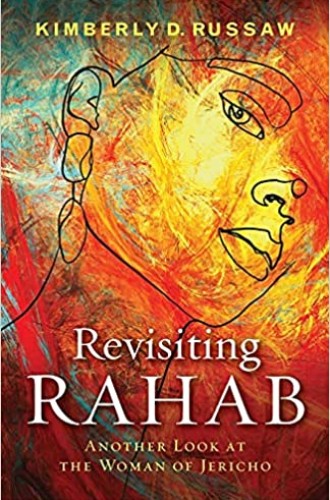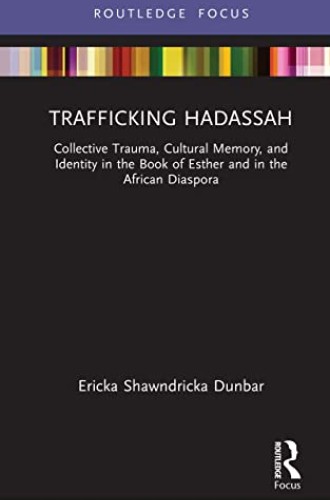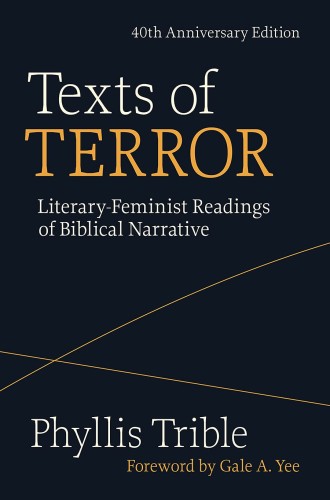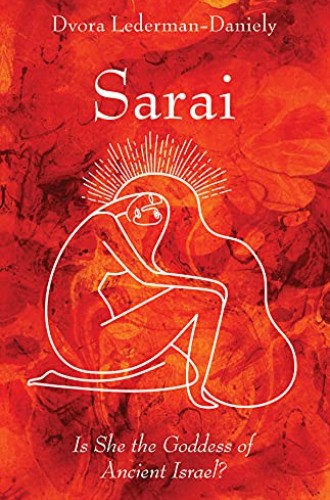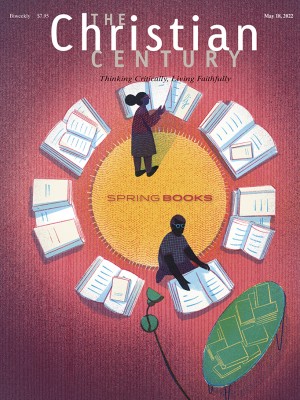Tired of seeing the Bible weaponized against her while she and her comrades advocated for women’s rights, Elizabeth Cady Stanton created The Woman’s Bible, the first commentary written solely by and for women. Stanton’s 19th-century book, which provided commentary on biblical passages that feature women or conspicuously exclude them, is the earliest published example of a feminist approach to the Bible. Feminist biblical interpretation began to flourish in the 20th century, as scholars focused on telling long-neglected stories of named and unnamed women in the Bible and on sharing information about women’s lives in biblical times.
Scholarship about biblical women has come a long way since The Woman’s Bible. Several new books offer readers fresh perspectives and in-depth analyses of women in the Bible. They use intersectional and global feminism as interpretive lenses, consider women not only as characters but also as interpreters, situate biblical women within their Afro-Asiatic cultural contexts, and make ancient Israelite women’s lives relevant to today’s Bible readers.
Read our latest issue or browse back issues.
Kimberly D. Russaw’s Revisiting Rahab: Another Look at the Woman of Jericho (Wesley’s Foundery Books) invites readers to reread Rahab’s narrative from the book of Joshua in a way that deprioritizes her occupation as a prostitute or sex worker and focuses instead on the questions her story raises about identity, autonomy, difference, and privilege. In this well-written, clearly organized and widely accessible book, Russaw revisits Rahab by summarizing the history of scholarship about this biblical heroine, placing Rahab’s story in conversation with African American literature, and proposing a new interpretive strategy.
Each chapter is autonomous, and Russaw’s writing enables readers from varying backgrounds to join in the conversation. She provides literary directional markers, skillfully builds her argument, defines new and potentially unfamiliar terminology, and carefully leads readers along the journey.
Russaw reintroduces Bible readers to Rahab by way of a womanist approach to the text. She leverages the writings of Harlem Renaissance novelist Nella Larsen to argue that Rahab is “passing” in Joshua 2. Passing—a way of positioning one’s identity—was commonly used against African Americans whose racial, ethnic, or cultural heritage appeared ambiguous. By painting Rahab as a cultural border crosser, Russaw dislodges her from the corners of marginality and re-presents her as an empowered transgressor of roles.
In Trafficking Hadassah: Collective Trauma, Cultural Memory, and Identity in the Book of Esther and in the African Diaspora (Routledge), Ericka Shawndricka Dunbar uses Africana biblical criticism to place the story of Esther in conversation with sexual trafficking discourse and the lived experiences of Africana women and girls, specifically in the transatlantic slave trade. Dunbar argues that Esther and her comrades in the king’s harem are victims of sexual trafficking, and she uses this realization to bring awareness to the collective trauma and identity imprinting caused by trafficking. By naming the literary devices the book of Esther deploys that normalize the violent seizure and displacement of virgin girls, many of whom Dunbar argues were of Ethiopian descent, she challenges readers to examine their own attitudes toward (and complicity in) violence against women and girls, even in forms that appear in scripture.
Trafficking Hadassah blazes new trails in Esther studies by expanding the discourse to include the impacts of ethnicity, colonization, and minoritization on sexual exploitation and abuse. Dunbar writes that she gives “particular attention to beauty, pageantry, humor, secrecy and hiding, euphemisms, and stereotypes,” to address “kyriarchy, patriarchy, gender hierarchies, political conflicts, abuses of power, domination, and brutal physical and sexual violence” in and out of biblical texts. Not only does her reading call for a reconsideration of Esther, but it also makes visible the often forgotten Africana women and girls who have been and continue to be trafficked and whose absence embeds collective trauma across the African diaspora. Thus, Trafficking Hadassah is simultaneously a call to remembrance and a call to action.
This year, Fortress Press released a new edition of Phyllis Trible’s landmark book Texts of Terror: Literary-Feminist Readings of Biblical Narrative. Originally published in 1984, Texts of Terror combines feminist hermeneutics and literary criticism to tell the stories of four biblical women and their horrific treatment in and by the text. Trible focuses on Hagar and Tamar in Genesis and Jephthah’s daughter and the Levite’s concubine in Judges, highlighting the harm inflicted on these four women amid the broader context of the subjugation of women in ancient Israel. Texts of Terror confronts the “sexism of scripture” and its violence against women in part as a way to illuminate the sexism, patriarchy, and violence suffered by contemporary women.
As in Revisiting Rahab, each chapter in Texts of Terror is designed to be read on its own, allowing readers to enter the book at any point and follow its logic. Each of the four women’s stories receives a close reading, and Trible does not shy away from the shocking and troubling elements of their narratives. Most importantly, she does not attempt to ease the tension by absolving the human and divine actors in the narratives—nor the text itself—of their complicity in the terrifying acts against these women.
Both Trible and Dunbar contend that the way stories are told has implications for identity formation—in the text, behind the text, and in front of the text. Further, both authors challenge readers to reflect on the politics at stake in storytelling. Who are the victims and victors in the story? Who continues to be victimized, and who continues to be valorized? What ideas about value and validity are crafted in these patterns? Trible’s and Dunbar’s books demand that Bible readers interrogate the metanarrative of the ancient Israelite story in order to liberate the women and girls of today.
In Sarai: Is She the Goddess of Ancient Israel? (Wipf and Stock), Dvora Lederman-Daniely explores the biblical story of Sarah/Sarai and argues that she is used as a disguise to mask the presence of the goddess Asherah, a divine consort of the Israelite deity YHWH. Lederman-Daniely uses the tools of social scientific biblical hermeneutics, including archaeology and anthropology, to center the stories of both a female character and a feminine divinity and to shed new light on ancient Israelite religion. Following in the footsteps of Saul Olyan, Mordechai Gilula, and Susan Ackerman, she argues that the goddess Asherah was a legitimate part of the cult of YHWH, thereby making ancient Israelite religious practice polytheistic rather than monotheistic.
Sarai begins with a close reading of Genesis, in which Lederman-Daniely excavates the text for ancient mythological clues. She then engages in a comparative analysis between the narratives in Genesis 12, 18, and 20 and Canaanite mythology. Lederman-Daniely posits several theories about a plausible redactive merger between Sarah/Sarai and Asherah, including the possibility that the changing of Sarai’s and Abram’s names in Genesis 17 is an editorial cover story to conceal the changing of Asherah’s name.
Lederman-Daniely offers etymologies of both Sarah/Sarai and Asherah to lay the foundation for a renewed consideration of Asherah not only as a consort of YHWH but as the deity’s divine queen and co-ruler. She builds her argument with textual and archaeological evidence, including the inscriptions found at Deir ‘Alla alluding to a goddess named Sarai. Through this fascinating study on Sarah/Sarai, new questions emerge about ancient Israel’s deity, Israelite religious practice, and the relationship between the Bible and other ancient Near Eastern texts.
These four books tell ancient stories in new ways, bringing women front and center as biblical subjects in their own right, as key figures in the story of ancient Israel, and as a vehicle for holding Bible readers accountable for interpretive practices that harm women and girls. While the reading can be difficult and the stories sometimes violent, I am excited about the trajectory of feminist and related hermeneutical approaches and their gains in recovering women in the Bible. We’ve come a long way since The Woman’s Bible.
Read Jason Micheli's theology selections and Jonathan Tran's ethics selections.


